We can often find connections to our ancestors through the places we visit. Australia has some captivating landmarks—both man-made and natural.
Sydney Opera House
One Australian landmark that people typically think of is the Sydney Opera House. It is not only recognizable as being in Australia, but it is known around the world as a famous man-made landmark. A contest was held in 1956 to design an opera house for Australian performers to call their home. The design by Danish architect Jørn Utzon was chosen, and work on the shell-like landmark began soon thereafter. The opera house was formally opened by Queen Elizabeth in 1973. Now the opera house is a favorite destination for both tourists and performers from all over the world.
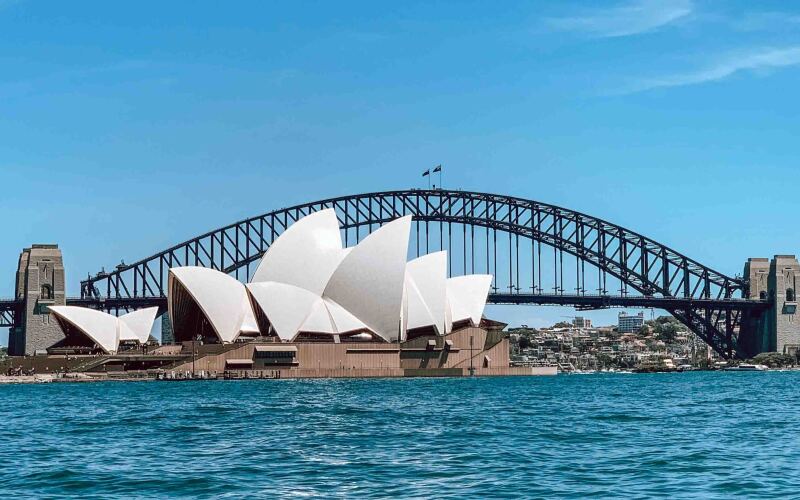
The Great Barrier Reef
The natural landmark of the Great Barrier Reef is also world-renowned as the world’s largest and longest coral reef. It consists of 3,000 individual reefs and 900 small islands on the northeast coast of Australia. Over 1,500 species of fish have been discovered there, and its white, sandy beaches are popular and beautiful.
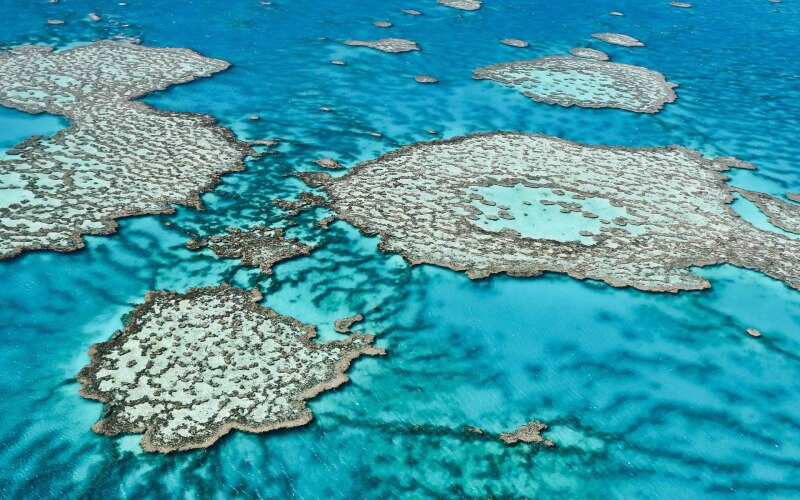
The Twelve Apostles
Located along the southern Victoria coastline, the Twelve Apostles are beautiful to behold. They consist of 12 limestone stacks that jut out from the Southern Ocean and can be viewed from the Great Ocean Road. The formations are estimated to be 15 to 20 million years old.

Uluru
In Central Australia, it would be hard to miss Uluru, also known as Ayers Rock. This impressive sandstone monument stands tall in the desert, and people are drawn to its bright orange imposing structure. In accordance with the wishes of the Aboriginal people, visitors can no longer climb this sacred rock, although you can walk around it in about 3 1/2 hours. Often called the heart of Australia, the area features many gorges, craters, waterholes, and canyons.

Australian War Memorial and Parliament House
Australia’s capital of Canberra is host to a couple of famous man-made landmarks you won't want to miss. The Australian War Memorial and Parliament House are both sites you may wish to visit. The war memorial, with its galleries and commemorative area, is dedicated to all Australians who have served in various wars.
The Parliament House, dedicated in 1988, is home to Australia’s lawmakers. The principal design of the Parliament House is in the shape of 2 boomerangs, topped by an 81-meter flagpole. The whole city of Canberra is packed with history and tributes to the rich history of the country.

Bondi Beach
Bondi Beach is the the most famous beach in Australia. The kilometer-long white sandy beach offers you opportunities to surf, swim, and sunbathe. Enjoy the sparking blue water, but beware of a dangerous riptide on the northern end. Bondi Beach is home to the world’s first surf lifesaving club and one of Australia's oldest swimming clubs.

Sydney Harbour Bridge
Sydney Harbour Bridge is another Australian man-made icon. The bridge spans one of the most beautiful harbors. Pedestrians, cyclists, and motor vehicles have dedicated lanes to cross the steel arch bridge that stretches from the central business district in downtown Sydney to the North Shore. Adventurous visitors can book a tour to safely climb to the top of the world's largest steel arch to experience amazing views. If you are there on New Year's Eve, you can enjoy the celebrations featuring fireworks from the bridge.
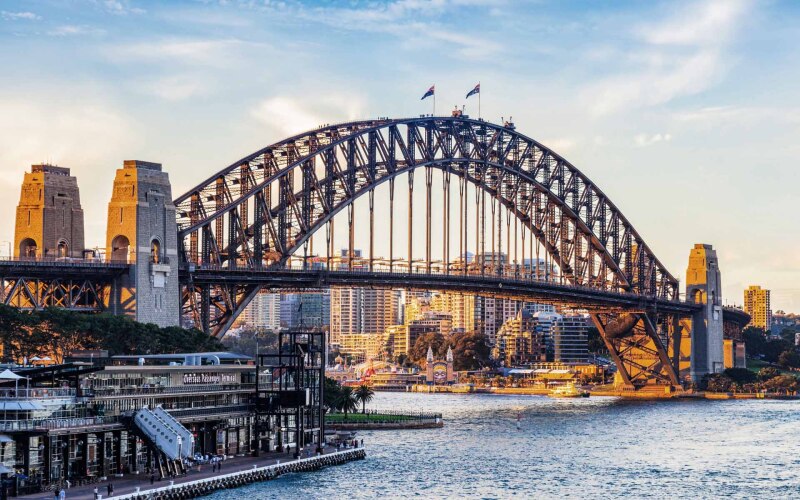
Kakadu National Park
Kakadu National Park, often referred to as a "living cultural landscape," is located in Australia’s northern region. The park appears on the World Heritage List for both its natural and cultural significance. Many of the archaeological sites document the Aboriginal presence over thousands of years; 65,000 years is an estimate for their continuous habitation. Kakadu’s rock art reveals the indigenous creation stories and is one of the longest historical records of a group of people in the world.
From a family history perspective, you will find this park and its stories fascinating and heartwarming. The park is large and expansive (about half the size of Switzerland) and offers you a myriad of activities, including bird watching, crocodile watching, waterfalls, events, galleries, and everything in between.
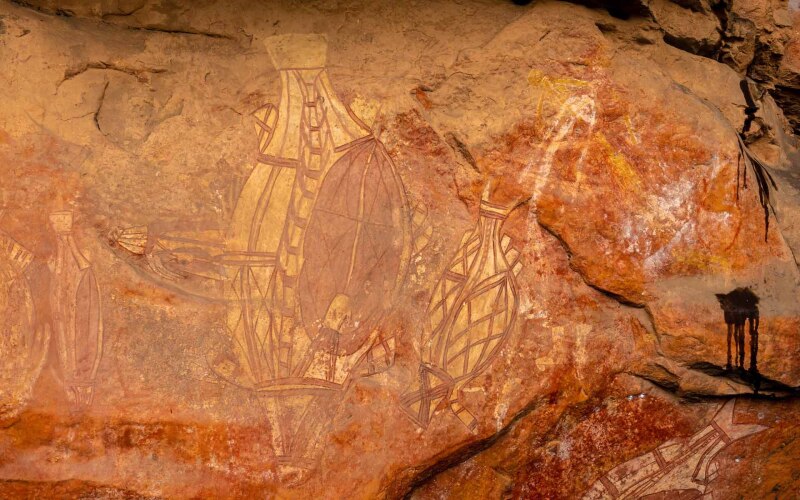
Port Arthur
The Port Arthur historic site has a very unique history as a former convict settlement. The site is located on Tasmania, a large island southeast of Australia's mainland. At the site you may participate in walking tours, research the history of convicts, explore a special area about the women who once lived in the Cascades Female Factory, and experience a “Paranormal Investigation.”
The settlement is the most intact of the many convict settlements that have dotted the country of Australia. Buildings and homes have been restored, along with ruins of a harbor and even a coal mine. At Port Arthur you can learn about the history of penal colonies in Australia and the progress they have made from what many consider to be an “unsettling remembrance.”
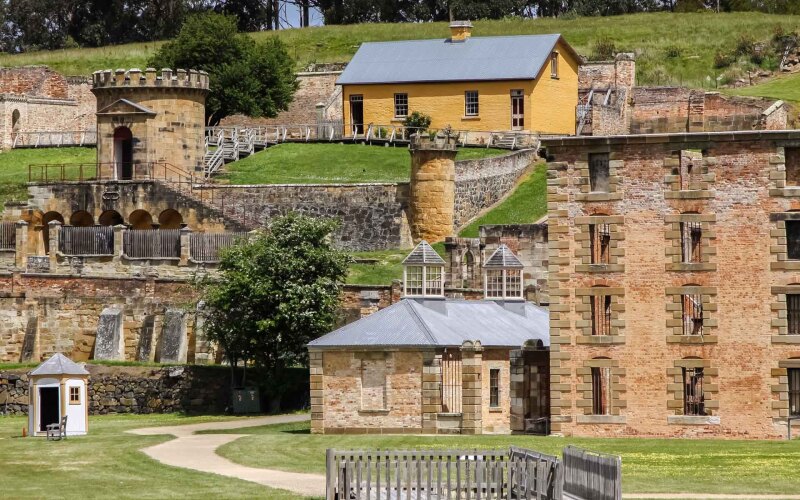
Melbourne Cricket Ground
Another man-made attraction, the Melbourne Cricket Ground, is a wonder to behold. The grounds were built primarily to support the hugely popular game of cricket, but it also hosts many other events such as the Australian Football League and concerts. The sports arena seats 100,000 people and was named as one of the “Seven Wonders of the Sporting World” in 2005.

Do You Have a Connection with These Australian Landmarks?
Often you can link your family history to these famous landmarks, or someone you know has a connection to them. By using the “Where Am I From” tool on FamilySearch, you can discover which of these landmarks may have been closest to your own Australian ancestors. You can take a virtual tour or plan your own getaway to explore and walk where your ancestors have walked.






